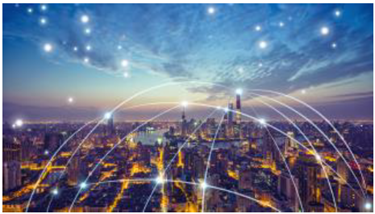How Energy Harvesting And The IoT Will Help Brands As The Return To In-Store
A conversation with Srinivas Pattamatta, Atmosic Technologies

While essential businesses have been fortunate enough to continue operating, COVID has put extra strain on the retail industry. Implementing IoT technology is a must for retailers aiming to safely reopen as the lockdown eases, but the costs of these applications can add up fast.
Atmosic Technologies VP of Business Development Srinivas Pattamatta believes that over the next few years we’ll see a big increase in the use of electronic price tags and other IoT applications thanks to energy harvesting tech, which can power devices that are battery-free or forever battery.
Srinivas took time to discuss this with Retail IT Insights.
Q: What are some applications in which the IoT is helping retailers?
Pattamatta: Many retailers are transitioning to programmable electronic shelf labels (ESLs) and other digital signage. The main benefit of digital signage is that updates to products can be made automatically in real-time, meaning that employees don’t need to worry about constantly updating in-store banners and price tags. As applications and technology advance, special pricing can be provided to select customers in real-time as another way to drive sales. Additionally, retailers can save on the cost of materials for physical signage displayed in-store.
Some retailers are also utilizing beacons, which are small Bluetooth devices that send alerts to smartphones based on location proximity. This means customers can download a store’s app to receive information about special events, discounts, and other reminders when they’re near the shop. Stores can even use beacons to send customers alerts when they walk by different departments. For example, a store might send customers a notification that there is a sale on jeans when they are passing by that section.
Q: What is energy harvesting and what factors in the market are driving its adoption?
Pattamatta: Energy harvesting is the process of capturing and storing small amounts of energy from external sources, such as radio frequency (RF), photovoltaic, thermal, and motion. This energy is then converted to electricity in place of, or as a supplement to, battery power. While the IoT has enabled a variety of new possibilities and innovations, using batteries as an energy source for these devices has several drawbacks, including their cost and difficulty to replace. Additionally, battery waste takes a toll on the environment with hazardous chemicals that can seep into the soil and make their way into our water supply. These factors are driving the demand for devices with energy harvesting, particularly in environments that require wireless location-based sensors such as retail stores, malls, stadiums, factories, enterprises, and the connected home.
Q: What role do technologies like low power radio and on-demand wake up play in extending battery life?
Pattamatta: One way that connected devices can prolong battery life is with a low power radio implementation that supports the latest Bluetooth 5.0 standard. The Bluetooth 5.0 platform has four times the range, two times the speed, and eight times the bandwidth than that of its predecessors. With extremely low power implementations, devices can more efficiently connect using Bluetooth 5.0, helping to extend battery life. Special techniques in designing low power Bluetooth 5.0 radios can help IoT devices extend battery life 2-5X times, thereby making multi-year battery life a reality.
On-demand wake up is another type of technology that can enable longer battery life. It essentially works like a second pair of ears that listens for RF wake-up signals coming in. The primary transmitter and receiver remain off until the second pair of ears “hears” RF wake-up signals and notifies the primary pair that relevant RF is coming in; then, the primary pair, which performs data connectivity functions and therefore requires additional power, turns on to complete the transaction. This enables the data connectivity radio (transmitter and receiver) to wake up only when needed rather than wasting battery power sending beacons when not needed.
The combination of low power radio, on-demand wake-up technologies, and energy harvesting can enable devices to consume up to 100 times less energy than traditional solutions, enabling devices to run on a “forever battery” or without any batteries at all.
Q: Can you explain the concept of a “forever battery” and how close we are to achieving it?
Pattamatta: The term “forever battery” refers to IoT devices that can work for the lifetime of the device on the batteries they come with. Energy harvesting, low power radio, and on-demand wakeup technologies have already made “forever battery” life possible, an incredible breakthrough for the IoT. Many different types of devices like wearables, beacons, remote controls, and sensors are already taking advantage of these cutting-edge technologies to deliver “forever battery” life. In the future, we’ll even see more powerful devices like smartphones with this capability. With careful design, the concerns about “battery life” can and will become a forgotten issue — something we used to worry about.
Q: How will these technologies help retailers as they reopen?
Pattamatta: The pandemic has been quite challenging for brick-and-mortar retailers, especially for stores that had to close down for a while. Now more than ever, retailers are looking to cut costs and find ways to be more efficient. Low power ESLs offer a way that retailers can be more efficient with minimal up-front investment. Additionally, low power beacons enable stores to enhance the customer experience through personalized promotions, in addition to sharing updates while minimizing in-person interactions for the safety of customers and employees alike.
